Grand Teton National Park in Wyoming is a natural treasure filled with snow-capped peaks, crystal-clear lakes, vibrant wildlife, and historic landmarks. Whether you’re a first-time visitor or a returning explorer, these Top 15 best places to visit in Grand Teton National Park will help you experience the very best of the park.
Table of Contents
1. Jenny Lake
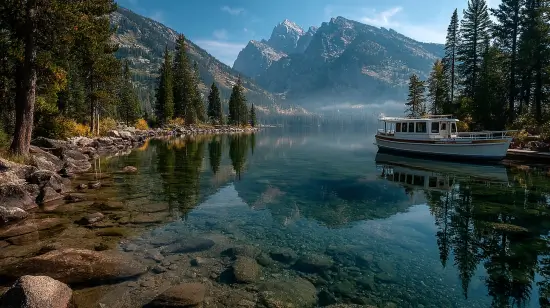
Jenny Lake is the heart of Grand Teton National Park and offers some of the most iconic views in the area. You can hike the scenic loop, take a shuttle boat across the lake, or embark on popular trails like Hidden Falls and Inspiration Point. Its calm, reflective waters beautifully mirror the towering Tetons.
Must-Know: Shuttle boats operate seasonally—check timing in advance to plan your hike efficiently.
2. Mormon Row Historic District
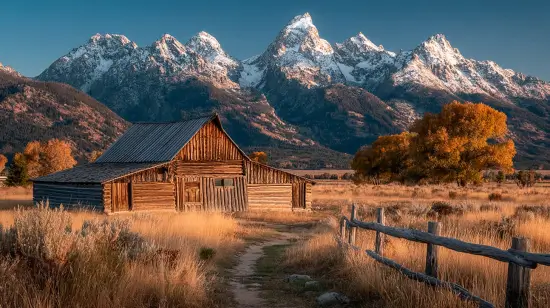
This historic homesteading site is home to the famous Moulton Barns, with the Teton Range in the background—a dream scene for photographers. The row dates back to the 1890s and captures the rugged spirit of early settlers.
Instruction: Stay on marked paths and don’t climb on the old structures to help preserve them.
3. Jackson Lake
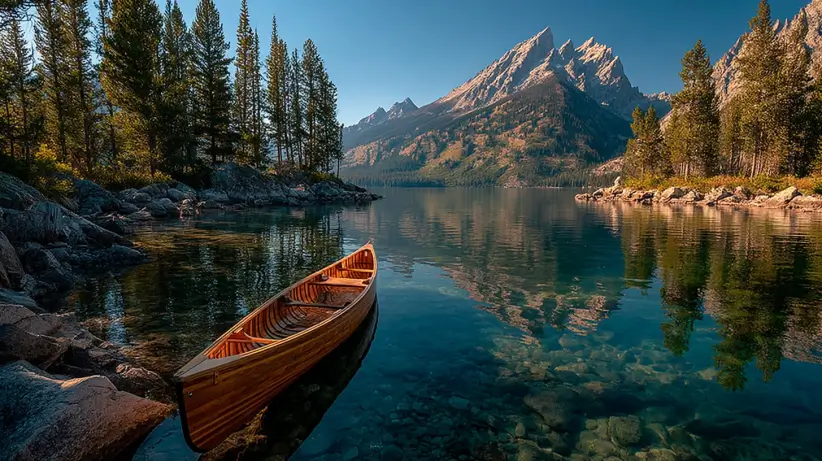
As one of the largest lakes in the park, Jackson Lake offers endless adventure—boating, fishing, and kayaking, with breathtaking views of Mount Moran. Colter Bay Village nearby offers lodging, supplies, and a visitor center.
Tip: Rent a canoe early in the morning to enjoy calm waters and spot wildlife along the shore.
4. Oxbow Bend

Oxbow Bend is a peaceful pullout where the Snake River curves gently with the Tetons and Mount Moran perfectly reflected in its still waters. It’s one of the most photographed scenes in the entire park, especially at sunrise.
Must-Know: Wildlife like moose, beavers, and eagles are often active here around dawn—bring binoculars.
5. Schwabacher Landing
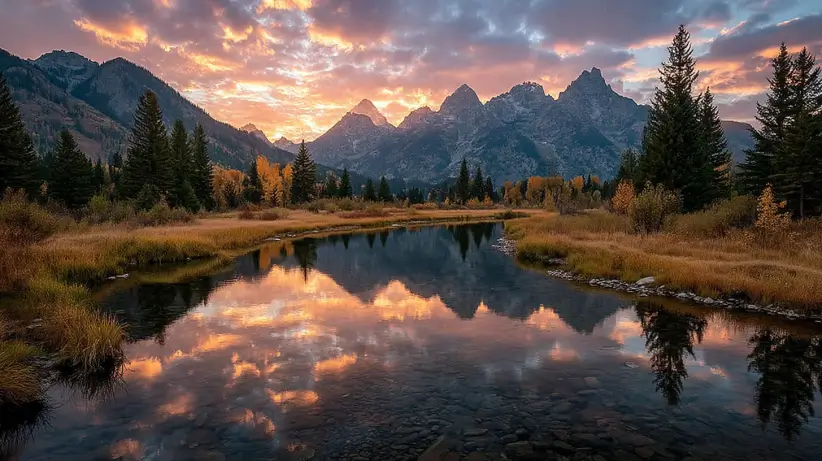
Located just off Highway 89, Schwabacher Landing offers an easy riverside walk and stunning views of the Tetons reflected in the Snake River. It’s also a hotspot for spotting moose and waterfowl in the early morning.
Tip: Arrive before sunrise for amazing light and reflections—ideal for photographers and nature lovers.
Also Read: Ultimate 2025 USA Travel Guide: Top 10 Best Places to Visit in the US
6. Cascade Canyon Trail

One of the most beautiful trails in the park, Cascade Canyon, begins after taking the Jenny Lake boat shuttle. The trail winds past waterfalls, alpine meadows, and rugged peaks, offering dramatic views every step of the way.
Instruction: Always hike in groups and carry bear spray—this is prime bear country.
7. Signal Mountain
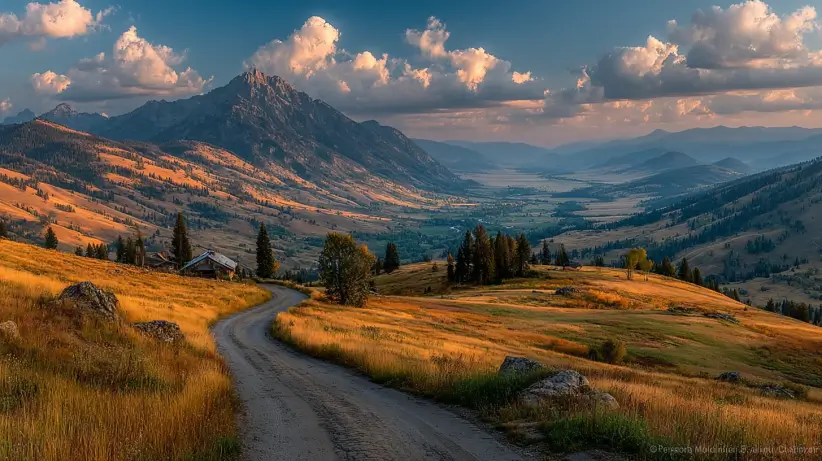
This drive-up (or hike-up) summit gives you a wide-angle view of the entire Jackson Hole Valley and the Teton Range. It’s especially beautiful at sunrise or sunset when the landscape is bathed in golden light.
Must-Know: It gets windy and chilly at the summit—bring a jacket even in summer.
8. Taggart Lake
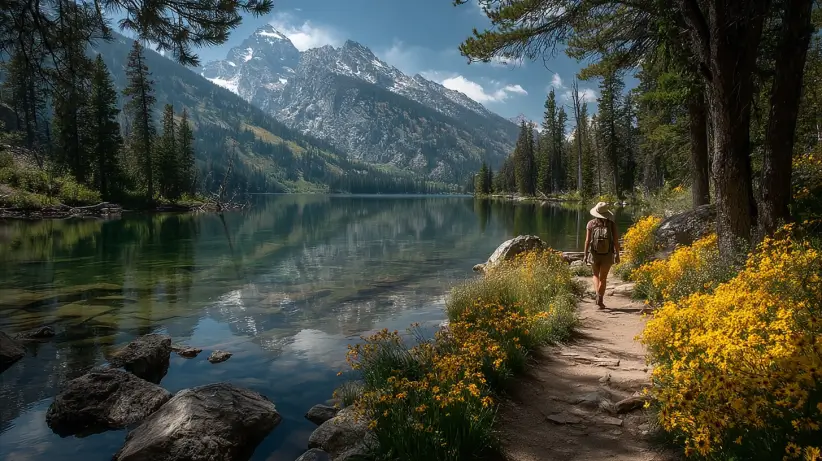
A relatively easy 3-mile round-trip hike brings you to the serene Taggart Lake. The trail offers open views of the Tetons, shaded forest sections, and lush wildflower-filled meadows. It’s a perfect family-friendly adventure.
Tip: This is a great warm-up hike for those new to high-altitude trekking.
Also Read: Top 10 Best Places to Visit in Australia (Full Travel Guide for Visitors)
9. Chapel of the Transfiguration

This rustic log chapel sits quietly near Moose and frames the Tetons perfectly through its altar window. Built in 1925, it’s a peaceful and spiritual place that welcomes visitors of all backgrounds.
Instruction: Respect the sanctuary—keep voices low and avoid blocking the altar window for others.
10. Leigh Lake

Accessible via a flat trail from String Lake, Leigh Lake is peaceful, with deep blue water and majestic mountain views. It’s a wonderful place to paddle or relax on the shore away from crowds.
Tip: Early mornings have calmer water, making it perfect for kayaking or photography.
11. Phelps Lake & Rockefeller Preserve
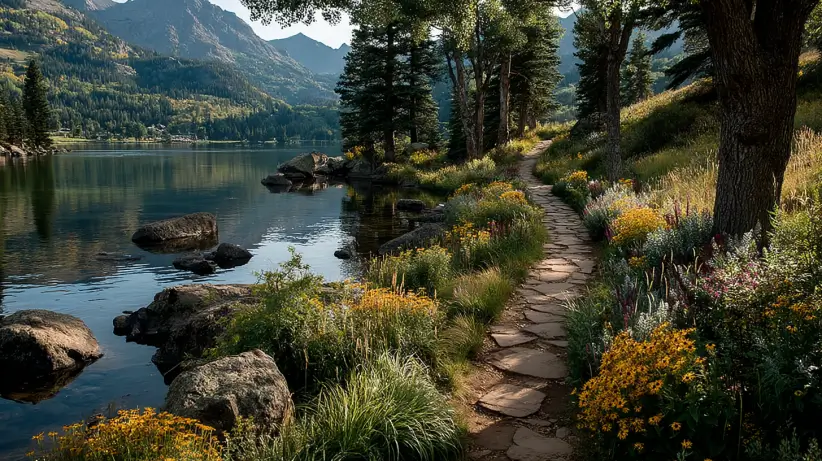
Start your journey at the beautiful Laurance S. Rockefeller Preserve, then hike to Phelps Lake through aspen groves and wildflower meadows. It’s less crowded and deeply tranquil.
Must-Know: Parking here is limited—arrive before 9 a.m. or risk waiting in line for a spot.
12. Moose-Wilson Road
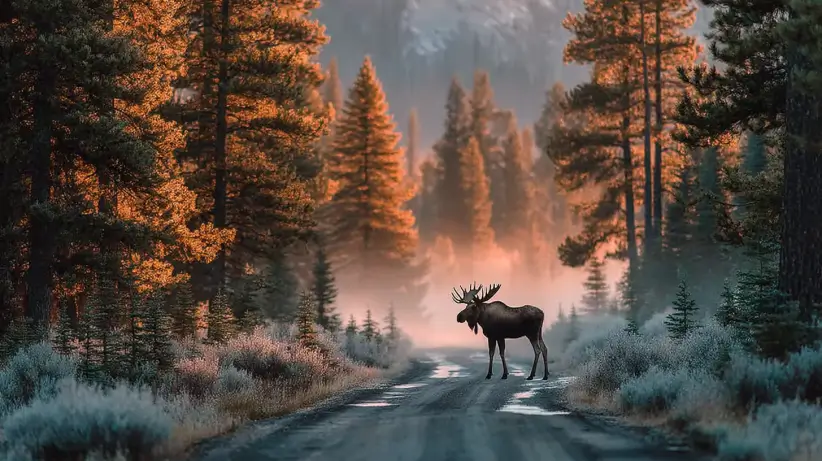
This narrow, winding road is one of the park’s best wildlife-viewing routes. You’re likely to see moose, black bears, and other wildlife in their natural habitat, especially during early morning hours.
Instruction: Drive slowly and be prepared for sudden stops—wildlife can appear suddenly.
13. Snake River Overlook

Famous for Ansel Adams’ legendary photo, this viewpoint captures the Snake River with the Tetons rising behind it. No hike required—just park and soak in the view.
Tip: Midday light is harsh. Visit at sunrise or golden hour for the best shots.
Also Read: Best Places to Visit in New Zealand: A Journey Through the Land of Natural Wonders
14. Teton Village

Located near the park’s southern end, Teton Village is a year-round hub for outdoor adventure—skiing in winter and hiking or biking in summer. You can also take the Aerial Tram for unmatched views.
Must-Know: Tram rides require a ticket—buy online in advance during busy seasons.
15. Two Ocean Lake

If you’re looking to escape the crowds, head to Two Ocean Lake for a tranquil hike and serene lake views. It’s tucked away in the park’s northeast and offers a 6.4-mile loop around the lake.
Tip: Mosquitoes can be heavy in summer—bring strong repellent and long sleeves.
Final Tips for a Safe & Enjoyable Visit
- Carry Bear Spray: Always, especially on hikes.
- Start Early: Parking lots and trails fill up fast—beat the rush and heat.
- Stay on Trails: It protects both you and the landscape.
- Respect Wildlife: Stay 100 yards from bears, 25 yards from other animals.
- Pack Essentials: Water, snacks, sun protection, and a map—don’t rely solely on your phone.
Final Word
Grand Teton National Park is more than just a scenic stop—it’s a place that stirs the soul. From glacial lakes and towering peaks to tranquil forests and abundant wildlife, every corner of the park invites awe and adventure. Whether you’re paddling across Jenny Lake, capturing sunrise at Oxbow Bend, or hiking through Cascade Canyon, you’re making memories in one of America’s wildest and most beautiful places.
Travel Smart, Explore Deeply and Leave No Trace. Your journey through Grand Teton will be unforgettable—just remember to respect the land, the wildlife, and fellow visitors so generations to come can enjoy the same magic.
Frequently Asked Questions (FAQs)
1. What is the best time to visit Grand Teton National Park?
The best time to visit is from mid-June to late September, when all roads, visitor centers, and hiking trails are typically open. Summer offers wildflowers, wildlife sightings, and perfect conditions for hiking and boating.
2. Do I need a reservation to enter Grand Teton National Park?
No, you don’t need a reservation to enter the park. However, lodging, campground sites, and special activities like guided tours or the Jenny Lake shuttle may require advance booking during peak season.
3. How many days do I need to explore the park?
Plan for at least 3 to 5 days to truly experience the park’s top highlights, including scenic drives, day hikes, lake activities, and wildlife viewing.
4. Is Grand Teton National Park family-friendly?
Yes! Many trails, like Taggart Lake or Leigh Lake, are easy and suitable for kids. The visitor centers also have interactive exhibits for young explorers.
5. Can I see wildlife easily in the park?
Absolutely. Grand Teton is home to moose, elk, bears, bison, and bald eagles. Best times for sightings are early mornings or dusk along Moose-Wilson Road, Oxbow Bend, or Schwabacher Landing.
6. Do I need bear spray in Grand Teton?
Yes, especially if you plan to hike. Bear spray is essential and should be carried at all times. It’s available for rent or purchase in nearby towns or park shops.
7. Is there cell phone service in the park?
Cell coverage is spotty at best. Don’t rely on your phone for maps or directions. It’s wise to download offline maps or carry a printed park map.
8. Can I visit both Grand Teton and Yellowstone in one trip?
Yes! Grand Teton is just 10 miles south of Yellowstone National Park, and many travelers combine both in a single trip. Plan at least a week to do both parks justice.
9. Are pets allowed in Grand Teton National Park?
Pets are allowed in parking areas, campgrounds, and on paved roads, but not on trails or in the backcountry. Always keep pets leashed and never leave them unattended.
10. Where can I stay inside or near the park?
You’ll find lodging inside the park at places like Jackson Lake Lodge, Jenny Lake Lodge, and Colter Bay Cabins. Outside the park, the town of Jackson offers hotels, inns, and vacation rentals.
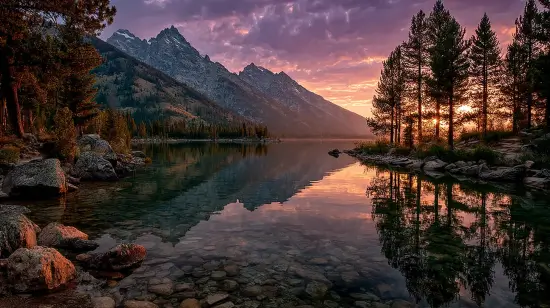
Leave a Reply
You must be logged in to post a comment.